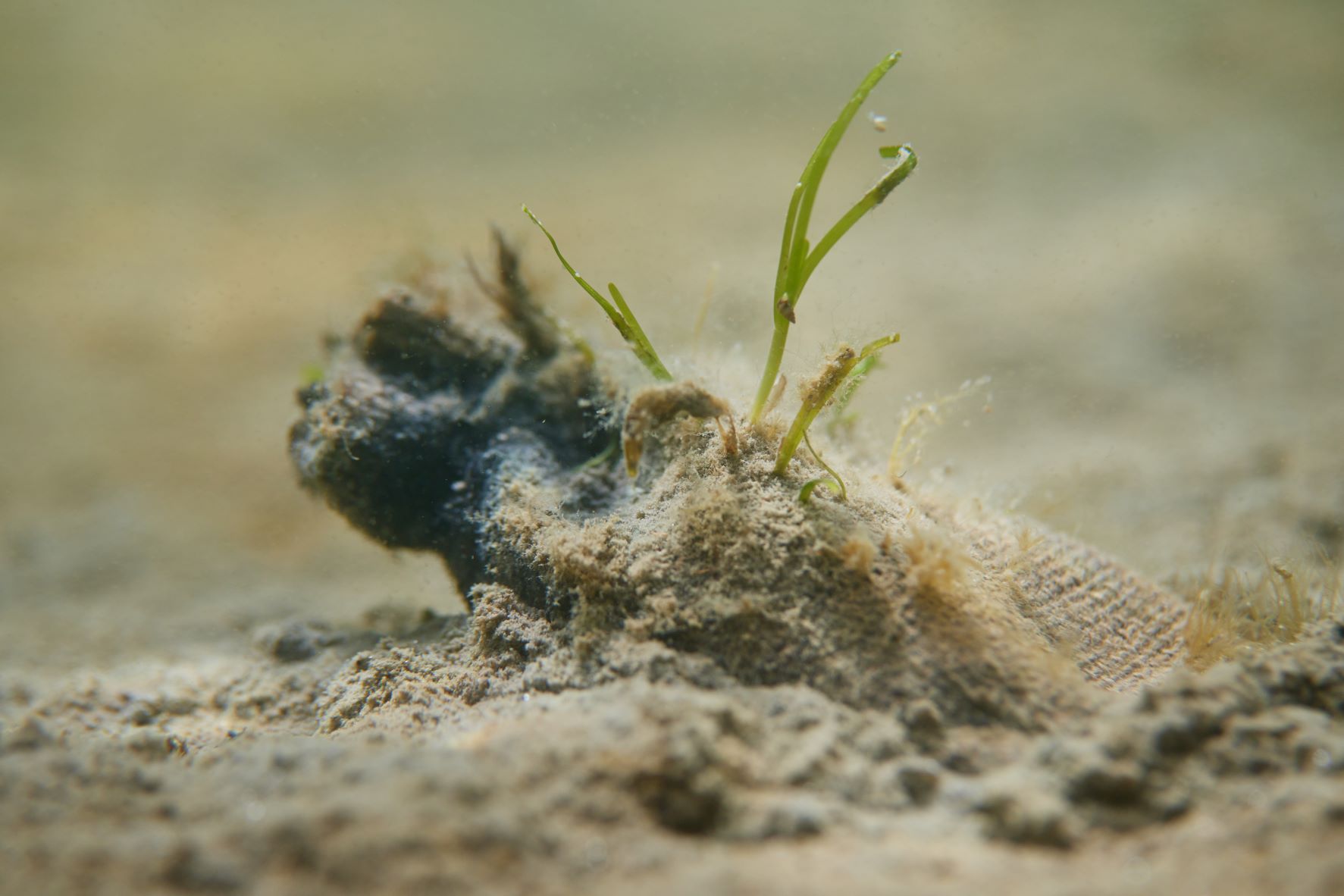Scottish Seagrass Restoration: A Bid For Coastal Nature Recovery

Table of Contents
The Ecological Importance of Scottish Seagrass Meadows
Seagrass meadows are often referred to as the "lungs of the ocean" and for good reason. These underwater grasslands provide a wealth of ecosystem services that benefit both the marine environment and human society. They are biodiversity hotspots, teeming with life. Their intricate root systems create a complex habitat for a wide array of species, contributing significantly to coastal nature recovery.
- Significant Carbon Sink (Blue Carbon): Seagrass meadows are incredibly efficient at sequestering carbon dioxide from the atmosphere, storing it in their sediments. This "blue carbon" plays a vital role in mitigating climate change, with estimates suggesting that seagrass stores carbon at a rate far exceeding that of terrestrial forests.
- Habitat for Numerous Species: Scottish seagrass meadows support a rich tapestry of life, including commercially important fish like cod and plaice, invertebrates such as seahorses and crustaceans, and various bird species that depend on the ecosystem for food.
- Coastal Erosion Prevention: The dense root systems of seagrass act as a natural barrier, stabilizing sediments and reducing coastal erosion. This protection is particularly important in the face of rising sea levels and increased storm intensity.
- Water Purification: Seagrass meadows act as natural filters, improving water clarity and quality by trapping pollutants and excess nutrients. This filtration process benefits the entire marine ecosystem and helps maintain healthy water conditions for other marine life.
- Support for Commercially Important Fisheries: By providing essential habitat and nursery grounds for many fish species, seagrass meadows contribute to the productivity and sustainability of Scotland's fisheries, benefiting local economies.
Challenges to Seagrass Restoration in Scotland
Despite their immense ecological value, seagrass restoration in Scotland faces significant hurdles. A multitude of factors contribute to the decline of these valuable meadows, making restoration efforts complex and challenging.
- Pollution from Agricultural Runoff and Sewage: Nutrient pollution from agricultural runoff and untreated sewage leads to eutrophication, causing algal blooms that smother seagrass.
- Impacts of Coastal Development and Dredging: Coastal development projects, including dredging for navigation and construction, often directly damage or destroy seagrass habitats.
- Effects of Climate Change: Rising sea temperatures, ocean acidification, and increased storm intensity all negatively impact seagrass health and resilience.
- Competition from Invasive Species: Certain types of seaweed can outcompete seagrass for resources, hindering its growth and recovery.
- Difficulties in Seed Collection and Propagation: The successful propagation of seagrass requires specialized techniques, and collecting sufficient seeds for restoration projects can be challenging.
Current Seagrass Restoration Projects in Scotland
Several organizations and initiatives are actively engaged in seagrass restoration across Scotland, employing various techniques and fostering community involvement.
- Specific Organizations and Projects: [Insert names and links to relevant organizations and projects here, for example, SeaLife Trust, Scottish Natural Heritage, etc.]
- Restoration Methods: Techniques include transplanting mature seagrass shoots and seeding, which involves scattering seagrass seeds in suitable areas.
- Community Engagement: Volunteer programs and community-based initiatives play a critical role in supporting restoration efforts, raising awareness, and engaging the public in conservation.
- Monitoring Programs: Long-term monitoring is crucial to assess the success of restoration projects and adapt strategies based on observed results.
- Case Studies: [Include brief descriptions of successful restoration projects, highlighting their methods and outcomes].
Innovative Approaches to Seagrass Restoration
The field of seagrass restoration is constantly evolving, with researchers and practitioners exploring innovative technologies and approaches to enhance efficiency and effectiveness.
- Use of Drones for Planting and Monitoring: Drones offer a cost-effective and precise way to plant seagrass and monitor its growth and health over large areas.
- Development of Artificial Reefs: Creating artificial reefs can provide suitable substrates for seagrass colonization and enhance habitat complexity.
- Application of Sustainable Farming Practices: Promoting sustainable agricultural practices reduces nutrient runoff into coastal waters, creating a healthier environment for seagrass growth.
- Exploring Genetic Diversity: Research into seagrass genetic diversity can help identify resilient strains better adapted to changing environmental conditions.
Conclusion
The restoration of Scotland's seagrass meadows is essential for achieving coastal nature recovery and ensuring the long-term health of our marine environment. These vital ecosystems provide a range of ecological, economic, and social benefits. While challenges remain, the ongoing efforts and innovative approaches detailed above demonstrate a growing commitment to Scottish seagrass restoration. Continued investment in research, innovative techniques, and community engagement is crucial for the success of these vital restoration projects.
Join the movement to protect and restore Scotland's precious seagrass meadows. Learn more about how you can contribute to Scottish seagrass restoration today!

Featured Posts
-
 Marvels Content Strategy Balancing Quantity And Quality
May 05, 2025
Marvels Content Strategy Balancing Quantity And Quality
May 05, 2025 -
 Cedric Klapischs Les Couleurs Du Temps Studiocanal Secures Distribution Deal At Cannes
May 05, 2025
Cedric Klapischs Les Couleurs Du Temps Studiocanal Secures Distribution Deal At Cannes
May 05, 2025 -
 Stefano Domenicali And Formula 1s Explosive Growth A Strategic Analysis
May 05, 2025
Stefano Domenicali And Formula 1s Explosive Growth A Strategic Analysis
May 05, 2025 -
 Ao Vivo Corinthians X Santos Horario E Times Confirmados
May 05, 2025
Ao Vivo Corinthians X Santos Horario E Times Confirmados
May 05, 2025 -
 French Minister Valls New Caledonia Visit Focus On Shared Responsibility
May 05, 2025
French Minister Valls New Caledonia Visit Focus On Shared Responsibility
May 05, 2025
Latest Posts
-
 Behind The Scenes Bradley Cooper Directs Will Arnett In New York
May 05, 2025
Behind The Scenes Bradley Cooper Directs Will Arnett In New York
May 05, 2025 -
 Gigi Hadids Candid Conversation Rare Details On Bradley Cooper
May 05, 2025
Gigi Hadids Candid Conversation Rare Details On Bradley Cooper
May 05, 2025 -
 New Photos Bradley Cooper Directing Will Arnett On The Set Of Is This Thing On In Nyc
May 05, 2025
New Photos Bradley Cooper Directing Will Arnett On The Set Of Is This Thing On In Nyc
May 05, 2025 -
 Is This Thing On Production Bradley Cooper And Will Arnett Photographed In Nyc
May 05, 2025
Is This Thing On Production Bradley Cooper And Will Arnett Photographed In Nyc
May 05, 2025 -
 Nyc Late Night Filming Bradley Cooper Directs Will Arnett For Is This Thing On
May 05, 2025
Nyc Late Night Filming Bradley Cooper Directs Will Arnett For Is This Thing On
May 05, 2025
